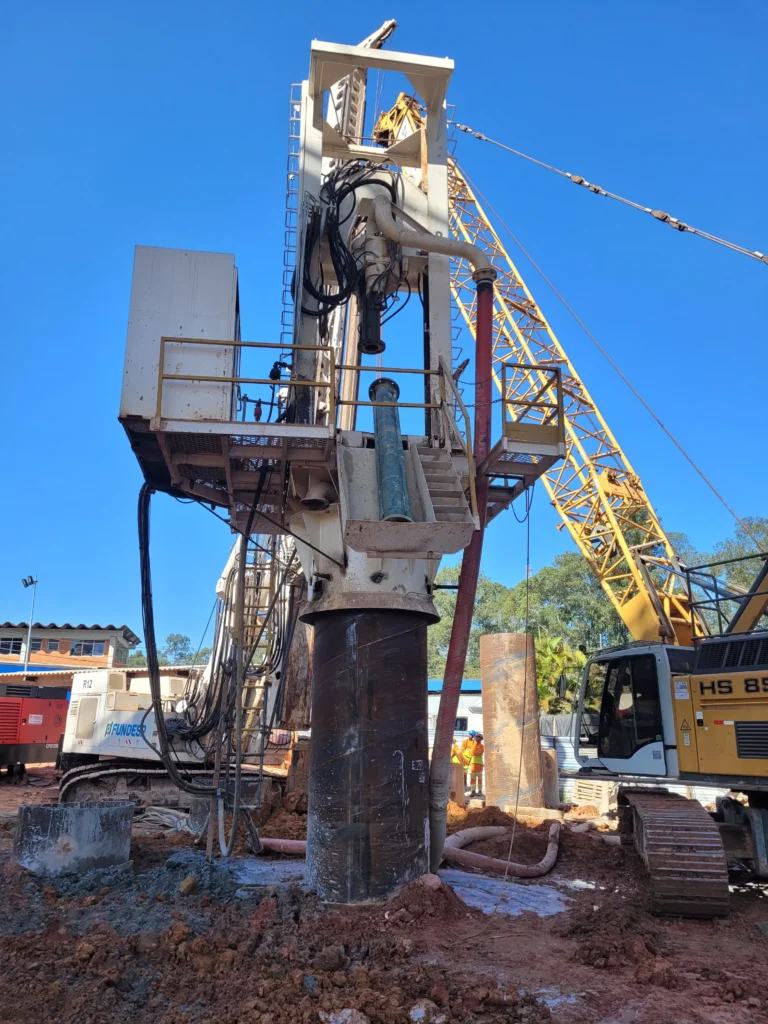For mechanical drilling, the pile is executed in the soil section using the usual techniques of excavated piles. Once the rock surface is encountered, the bucket is replaced with an auger with tungsten tips. This solution is commonly used for resistant soil layers and soft rocks.
For embedding in rock using the reverse circulation process, a metal casing is driven into the soil section, and in the rock section, excavation is done by rotation using a roller bit. This system is known to be highly efficient for large diameter and deep drilling in both onshore and offshore projects.
Drilling is carried out in the soil section using the usual techniques of excavation piles, with the use of stabilizing mud and bucket as the excavation tool, until reaching a resistant soil layer or the rock top.
Piles anchored in rock with root piles.
This solution can be used when, depending on the type and hardness of the rock, the length of the pile, or the overall volume of the project, other methods become technically or economically unfeasible.
After the excavation and cleaning of the mud, the pile is concreted normally, taking care to place guide pipes in solidarity with the reinforcement to allow for the subsequent execution of the root piles, the number, diameter, and dimensions of which vary depending on the load capacity of the pile (tension and/or compression) and the characteristics of the rock.
When dealing with highly fractured or voided rock formations, the execution of root piles has the advantage of allowing for the injection of grout into the rock mass, thereby improving its geomechanical properties.
This process involves injecting compressed air into the drilling pipe, below the water level, just above the cutting head. The air enters and expands within the drilling pipe, reducing the internal density of the fluid column, creating a pressure difference between the fluid inside the drilling pipe and the drilling fluid.
